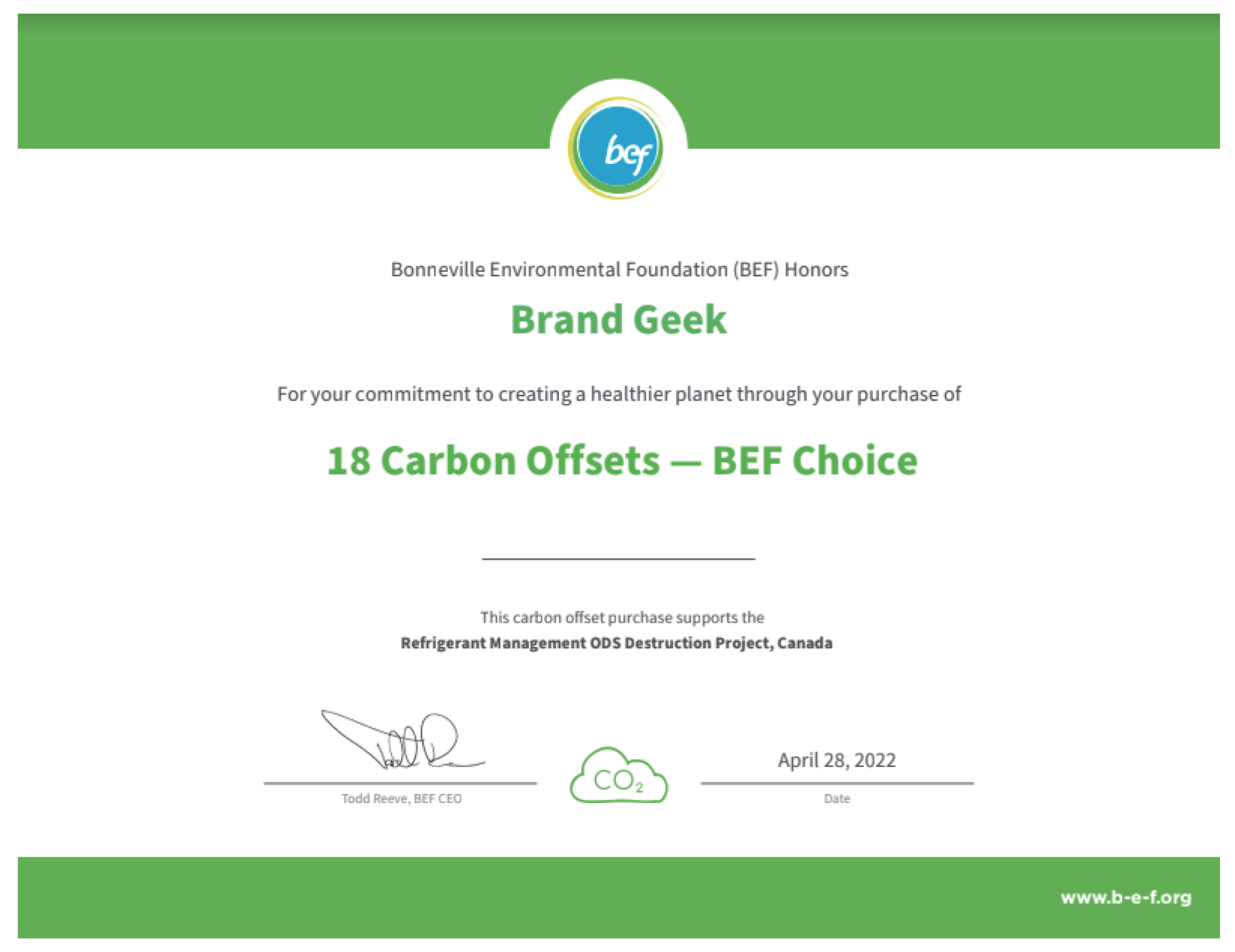Brandgeek proudly supports Mountain Area Preservation and is humbled to be…
USPTO Reports to Congress on Trademark Bullying
My friend, mentor, and motivator, John Welch of the TTABlog®, posted on the e-Trademarks listserv today, “USPTO Issues Report to Congress on Trademark Bully Study.” I wrote about trademark bullying on December 15, 2010, January 13, 2011 & February 15, 2011. So, I for one am very eager to learn what the PTO has to say? If you too are dying to know, you can read the report here:
[pdf http://brandgeek.net/wp-content/uploads/2011/04/TrademarkLitigationStudy.pdf]If you’d rather read my 1800ish word summary of the report’s 34 pages, you can do so here, (with thanks!):
The document begins with a citation of the Public Law (111-146) that mandated the study, the purpose of which was to examine:
[framed_box](1) the extent to which small businesses may be harmed by litigation tactics the purpose of which is to enforce trademark rights beyond a reasonable interpretation of the scope of the rights granted to the trademark owner; and
(2) the best use of Federal Government services to protect trademarks and prevent counterfeiting.[/framed_box]
This is followed by a LETTER TO CONGRESS from Gary Locke, Secretary of Commerce at The Department of Commerce (DOC). Citing Interbrand’s 2010 Best Global Brands Study, it states that 9 of the top 10 global brands “hail from the US,” demonstrating the importance of trademarks to the US economy. While expressly recognizing trademark owners’ duty to police their marks, the report will examine whether some trademark owners may undertake enforcement measures for the purpose of intimidating compliance with the mark owner’s demands. (Having experienced a few instances of this annually for my entire career, I can’t wait to learn the findings, so onward!). The letter states that the PTO held a four month comment period during which 79 comments were received (need I say, pathetic?!), though few explicitly addressed whether and to what extent trademark abuse is a significant problem. It continues:
[framed_box] . . . [W]e believe the Federal Government can undertake the following actions [to combat abusive trademark litigation tactics]:1. Engage the private sector about providing free or low-cost legal advice to small businesses via pro bono programs and intellectual property rights clinics;
2. Engage the private sector about offering continuing legal education programs focused on trademark policing measures and tactics;
3. Enhance Federal agency educational outreach programs by identifying resources that enable small businesses to further their understanding of trademark rights, enforcement measures, and available resources for protecting and enforcing trademarks.[/framed_box]
Seems to me like the first two actions place the onus back on the trademark bar to donate their services to protect and educate the public. I’m just not sure how that stops bullying. The third action focuses on governmental educational outreach, though, again, it is unclear to me how this will protect small businesses from overreaching trademark owners whose goal simply is to outlast/outspend (bully!) their opponent. Maybe the report itself will make more sense (so I hope).
The Report’s Introduction reiterates why the report was conducted and the names the stakeholders involved in the research and outreach process (DOC, USPTO, U.S. trademark owners, practitioners and others, small businesses, industry, and the Trademark Public Advisory Committee). The report then provides basic information about trademark law and the strengths of trademarks before delving into trademark owner’s duty to police their marks and types of things brand owners monitor for potential infringement:
[framed_box]
newly filed trademark applications;
published trademark applications;
recently issued registrations;
domain name registrations;
the Internet, including Internet auction and news sites;
new company names;
competitors’ marks and marketing materials;
and other uses of trademarks in business. [/framed_box]
Next the report discusses the typical infringement analysis & other enforcement considerations that occur between brand owners and their trademark counsel, before addressing typical enforcement measures. The report addresses 3 typical enforcement measures: (1) Cease & Desist (C&D) Letters; (2) Settlement/License Agreements; (3) Litigation. The DOC found that most trademark enforcement commences with a C&D letter, the goal of which is swift resolution of the dispute. The tone of such letters was found to vary, the most serious letter including courtesy copies of complaints [sue first, ask questions later]. Apparently, C&D responses fall into three general categories:
[framed_box]
1) The alleged violator agrees to comply with the mark owner’s demands and/or stops using the offending trademark. If this occurs, the parties may memorialize this in writing with either a written response letter that resolves the matter, or if the matter is more complex, via a settlement agreement.
2) The alleged violator does not respond within the specified time frame. At this point, the mark owner often will send a follow-up letter. If no response is forthcoming, the mark owner will either decide to drop its effort and acquiesce in that party’s use, or the mark owner will continue to pursue the matter by filing a lawsuit (typically in a Federal district court). If the owner’s concern relates solely to efforts to register a mark, the owner may opt to file a proceeding with USPTO’s TTAB to petition to cancel a registration or oppose an application, instead of filing a district court action.
3) The alleged infringer denies the allegations of infringement and/or asserts various legal defenses justifying its ability to use its mark, files a declaratory judgment action, or offers a compromise solution for going forward. If the response presents compelling facts or legal points that the mark owner may not have known or failed to consider, the owner may decide to pursue settlement or drop its claims altogether (e.g., if it turns out the alleged infringer can show that it has priority of use). If the mark owner does not believe settlement is possible, the mark owner usually will continue to pursue the matter by filing a lawsuit or initiating a cancellation or opposition proceeding with USPTO’s TTAB.[/framed_box]
The Report acknowledges that some trademark disputes actually get resolved amicably by settlement or license agreement, enabling the trademark owner to exercise control over how its mark (or one similar thereto) is used. [NOTE – though the Report addresses only settlement and license agreements, consent/coexistence agreements also may be used in the resolution of infringement disputes].
The Report then gets into the nitty gritty of litigation. Trademark infringement is the cause of action asserted most commonly by brand owners. There are numerous remedies available to brand owners for infringement, including: injunctive relief; seizure and destruction of infringing goods, cancellation of federal registrations, the as well as lost profits, costs, damages & attorneys’ fees (though these are infrequently awarded). Because attorneys’ fees are awardable in “exceptional cases,” the Report finds that attorneys’ fees are one potentially suitable remedy for victims of abusive litigation tactics (presuming that the alleged infringer has the resources to retain counsel and defend a case through trial when such a determination would be made — unlikely at best, IMHO!). The Report also notes that such no such remedies exist TTAB cases (such a shame!). This section of the Report concludes that, “the potential for an award of attorneys’ fees is an existing deterrent to misuse of the litigation process in trademark disputes.” (What?!? Excuse me? There’s absolutely no potential for an award of attorneys’ fees when the opponent cannot afford to retain counsel, so how much of a deterrent is that really?)
Next the DOC examines “‘Reasonableness’ of Enforcement Efforts,” stating that trademark owners walk a fine line between being too zealous and not zealous enough. Based on some of the public comments it received, the DOC found that:
[framed_box] . . . most trademark owners are not setting out to assert dubious claims or be bullies when they initiate enforcement measures. They are simply trying to protect the strength of their marks and their reputation, and avoid the erosion of rights that may result from inaction. Likewise, most alleged infringers are not acting in bad faith. In fact, many act out of ignorance of the law or a misunderstanding of the scope of the owner’s trademark rights.[/framed_box]
In the “bullying” cases I have defended, the rights owners were not attempting to enforce their rights, they were attempting to extend their rights far beyond the scope of their registration and any reasonable zone of expansion. To its credit, the Report acknowledges that some mark owners may be overzealous, though it treats this as the exception rather than the norm. (Maybe bullying really is rare. Maybe I just attract bullying victims.) The Report then examines the scope of the bullying problem, mostly by stating that there’s not enough data to do so. Given the limited amount of data available about pre-litigation and pre-trial litigation tactics, the DOC asserts that it is extremely difficult to determine the extent of any purposeful overreaching, and whether the affects of such disproportionately effect small businesses. The PTO sought public comment on bullying (though it changed the verbiage changed midstream to “aggressive litigation tactics”) and, along with other US Agencies, conducted several outreach events.
79 comments were received:
[framed_box]
33 were from small business owners,
13 were from attorneys,
4 were from professors,
2 were from attorneys on behalf of small business owners,
4 were from intellectual property organizations, including one that surveyed its membership and reported the results, and
23 were from other interested parties.[/framed_box]
Of the 4 from intellectual property organizations, 1 was from the ABA Section of IP Law, which surveyed its members and obtained 270+ responses. The ABA noted that, “aggressive litigation tactics do appear not to be unique to the trademark field . . . judges should address any problems with such tactics in particular cases in lieu of any systemic attempt to address the problems, and that the consensus of those surveyed was that no legislative action is needed.” Given the limited number of comments and the varied nature of the commenters own experiences, the Report states that the comments “may be better viewed as anecdotal.” The Report then spends the next 5 pages (18-22) discussing the anecdotal evidence before launching into a discussion of the Government’s resources to protect IP and prevent counterfeiting.
The DOC houses the International Trade Administration’s Office of Intellectual Property (OIPR), which helps businesses protect their IP rights in the U.S. and abroad through training modules, outreach & seminars, Stopfakes.gov and 1-866-999-HALT. There’s even a task force called the National Intellectual Property Rights Coordination Center (IPR Center), which shares information, develops initiatives, coordinates enforcement actions, and conducts investigations related to IP theft in connection with several other US agencies.
So what’s it all mean? The Report Recommendations (the actions mentioned earlier) are discussed (dare I say slightly) more fully at the end of the Report.
The report concludes that “there are sufficient mechanisms in place to deter or punish those who resort to abusive trademark litigation tactics” — primarily, the threat of attorneys’ fees for abusive litigation tactics. In light of this, the DOC will encourage trademark practitioners to provide low-cost or pro bono legal assistance to help small business owners respond to frivolous claims of trademark infringement. (NOTE — this makes sense for Big Law with substantial resources (one must fight fire with fire), but, as one of my mentors counseled me years ago, a pro bono lawsuit can spell the end of a small law firm just as easily as a small client.) The DOC also will work with bar associations, universities and intellectual property rights organizations to develop pro bono programs (now that just might work, if resources can be pooled). The Report also recommends legal education be offered on best practices for C&D letters and on other trademark policing measures and tactics, and that small business owners be educated about IP rights and enforcement resources.
 Although the DOC found that there wasn’t enough evidence of a unique & widespread “trademark bullying” problem to warrant any sweeping changes, the creation of institutional pro bono trademark legal clinics could go a long way toward helping small business owners defend themselves when frivolous claims are made.
Although the DOC found that there wasn’t enough evidence of a unique & widespread “trademark bullying” problem to warrant any sweeping changes, the creation of institutional pro bono trademark legal clinics could go a long way toward helping small business owners defend themselves when frivolous claims are made.





I am one of the pathetic many who did not take the time to submit a comment about the pervasive trademark bullying that I see in my practice and while keeping up with events in the field. I should have.
Saying that Commerce will “engage the private sector” to encourage it to create pro bon clinics and for it to perform more enforcement education and that Commerce will “enhance” the outreach it does to small business is, in government speak, the equivalent of saying that nothing needs to be done: Commerce can’t expressly say nothing needs to be done because Senator Leahy directed the TM bullying study be performed for a reason. Commerce has to throw him some silly verbiage as a bone. But nothing of substance will be done. Talk, a conference, a guide, another link to yet another anti-counterfeiting website that benefits big business: all will ultimately be meaningless.
If I had submitted a comment I would have vented my frustration at the TM Office and Legal Zoom type companies who actively promote the idea that small business owners are savvy enough to navigate trademark law when adopting a company name or product or service name or other brand identifier. They’re not. Trademark enforcement is only necessary when there’s some perceived overlap of use – bullies enforce when the overlap is negligible but if the typically risk-averse small business owner had selected branding wholly different to begin with then no bullying would occur.
I think the far larger problem is very poor trademark selection by small business owners – made possible by ease of registration by the TM Office – rather than the smaller [and follow-on] problem of big business being trademark bullies.
It is fundamentally wrong, in my book, for the TM Office to encourage lay businessmen to apply to register trademark rights without also having pages and pages of instructions and examples of how to properly “clear the rights” first. Most people think that registering a trademark means they have the exclusive right to use the mark throughout the entire country and on all products or services. But, of course, the exact opposite is true: a registration only registers trademark rights already created under common law. The TM Office, however, feeds the fallacy and ignores what’s real. And so trademark litigators must hold lots of small business owner’s hands through innumerable trade name and branding disputes. That is extraordinarily wasteful and how the bullying concept arises.
TM Office heal thyself – only then can you blame the private sector for not providing sufficient pro bono services and enforcement education.
Thanks for making the time to read and comment on my blog, Dan. I agree that the PTO could help remedy the “bullying” issue by concentrating on providing education small business owners about trademark law and especially clearance. I can’t count how many times I have counseled clients against adopting a mark that’s similar to an existing mark for use on related goods just to avoid the potential for a problem, whether or not one will really exist. Often, especially with small businesses on tight budgets, I find it is just as important to help the client understand what the prior rights owner may think (& do) about the client’s use, as it is to inform them about how real the potential for consumer confusion is.
[…] sue to stop it? Might I risk damages for frivolous litigation as stated in the PTO’s recent report on trademark […]
I had a great deal of interest in S2968 and the resultant Report to Congress. Needless to reiterate the words of most commentors, the report was pretty much a joke.
That being said, I tend to stongly agree with Dan Ballard in respect to some sort of pre-emptive procedure which could effectively reduce or eliminate aggressive litigation tactics by TM owners who are both policing and protecting their brands.
For the record, I made multiple comments to the survey covering many, if not all, of the subject matter. With the dismal number of respondents I was lucky not to get a C&D from the PTO. But my concerns were based on fact and experience, two things that are very difficult to argue against.
My ordeal started by hiring an honest and intelligent attorney. We went through the complete process of research and opinion prior to filing our application. This is costly, painstaking and time consuming. But, it is the proper procedure. This is the point at which legislation needs to be effectively enacted to prevent ‘aggressive litigation tactics’ (I love the sugarcoated terminology). The reason is this: even after this well planned pre-filing process, it took 7 years to finally prevail at the TTAB. The cost, anxiety and frustration is incalcuable. Tie this to the fact that your Opposer will see your Application before it ever gets to the EA questions the purpose of an EA.
The docket is loaded with Ex Parte appeals but the current system also encourages a civil suit long before it could even come to that point.
The PTO and the judicial system has to allow a C&D or a civil suit only after an application has passed the EA.
Thanks so much for continuing to read & comment on my blog posts, Carl. It really is too bad that the issue of bullying isn’t taken more seriously.
It’s very Informative blog, each and every point you have mention in this blog is superb . Thanks for sharing with us.